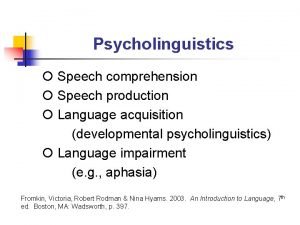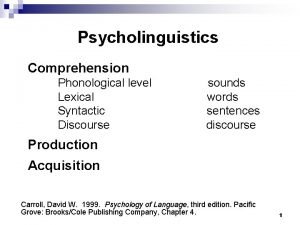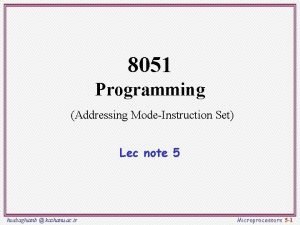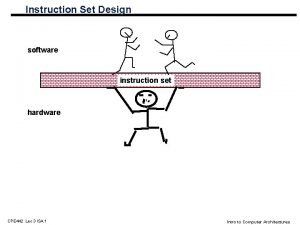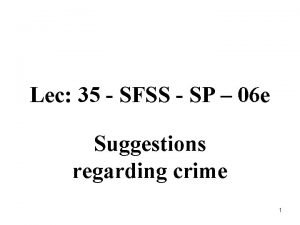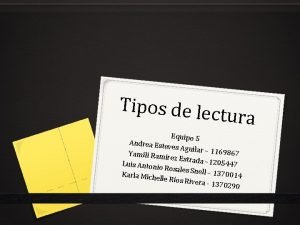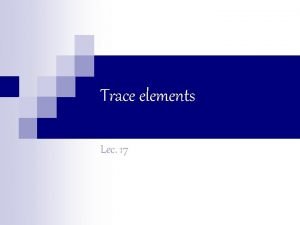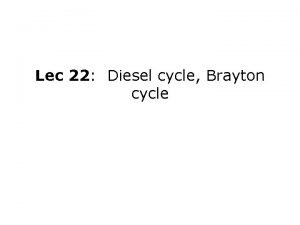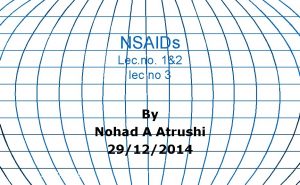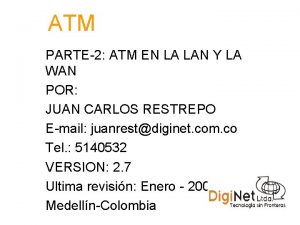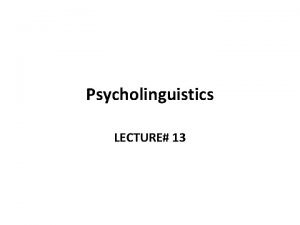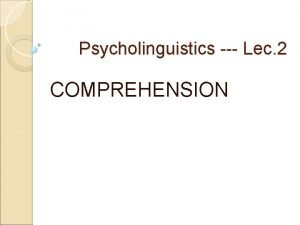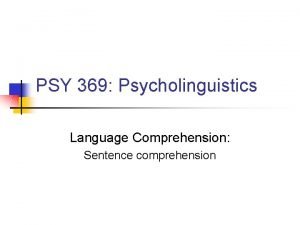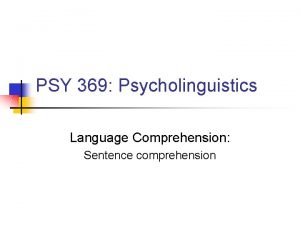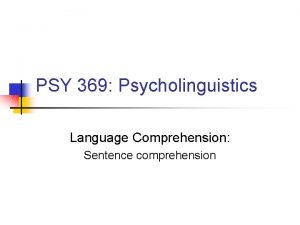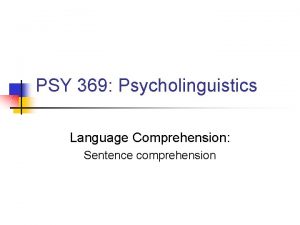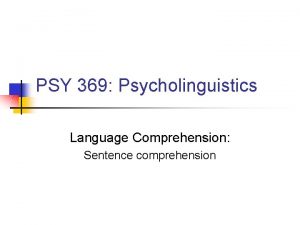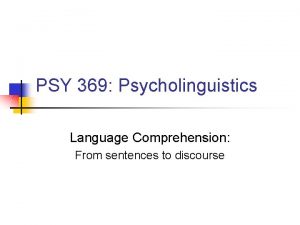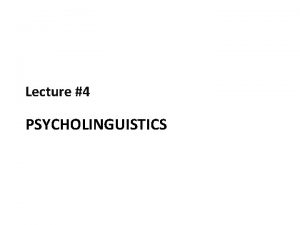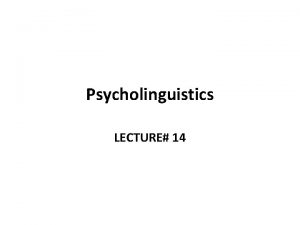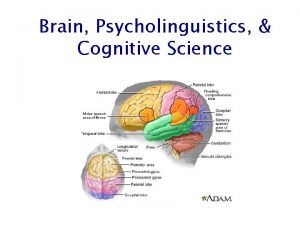Psycholinguistics Lec 2 COMPREHENSION COMPREHENSION SENTENCES What OF






























- Slides: 30

Psycholinguistics --- Lec. 2 COMPREHENSION

COMPREHENSION SENTENCES What OF are the processes people go through in comprehending a sentence? How do they come to the rightwrong interpretation. What sort of knowledge does the process demand?

What is comprehension? Two senses In its narrow sense it denotes the mental processes by which listeners take in the sounds uttered by a speaker and use them to construct an interpretation of what they think the speaker intended to convey—the building of meanings from sounds.

Ex. The old man met his daughter’s husband. 1. the sequence of words—their order —what words denote in nature. What constitute a unit. SURFACE STRUCTURE The words, their temporal order, their grouping They have to build an interpretation. Ex. X met Y

The sound end of the process The meaning end of the process To build an interpretation that resembles the underlying presentation of a sentence. A set of propositions plus their interrrelations.

Comprehension in its broader sense. How listeners put the interpretation they have built into work. An assertion A question An order So they have additional mental processes that make use of the interpretation they have constructed so far.

The two processes The construction process The utilization process They are linked

The construction process Underlying Simple sentence presentation Sentence with variables John walks X walks John hit Bill Propositional function Walk (x) X hit y Hit (x, y)

Propositions Arguments and predicates Agents-instruments-patients-objects

Constructing interpretations Listeners take a linear sting of words and construct a hierarchy or arrangement of propositions. The old man met his daughter’s husband

Constituents Immediate constituents Ultimate constituents Units—phrases or clauses Ex. The old man met his daughter’s husband

Constructing underlying propositions Constituent proposition old man the old man underlying man old known

Preliminary outline 1. phonological representation 2. they organize the phonological representation into constituentscontent and function 3. They use constituents to construct propositions. 4. Retain them in working memory

Surface constituents Studies from various viewpoints suggest that listeners→ 1. Feel constituents to be conceptually unified. 2. use them in the organization of speech. 3. store them in working memory. 4. purge them from memory when a sentence has ended.

The conceptual unity of constituents Constituents are replaceable. Constituents must have a conceptual coherence. Ex. The boy has lost a dollar.

Constituents as aids in perception Differences between native and second language speakers. Does isolating constituents really help in perception. Graf and Torrey (1966)

Form A Form B Studies from various viewpoints suggest that listeners feel constituents to be conceptually unified.

Constituents in Working Memory Once listeners have isolated constituents, they should hold them verbatim as constituents in working memory until they have no more need for them—used them in constructing underlying propositions

Ammon (1968) The polite actor thanked the old woman who carried the black umbrella PROBE-RESPONSE ((The (polite actor)) (thanked ((the (old woman)) (who (carried (the (black umbrella)))))))

Constituents in the Construction of Propositions How early in the listening process do constituents normally become relevant? “the unit of speech perception corresponds to the constituents” (Fodor and Bever (1965)) In perception, units resist interruption to preserve their integrity. Fodor and Bever’s experiment. (Click displacement)

Real-time Processing Listeners have a limited capacity for processing what they hear in the time available. Ex. The Army officer met the young troops. Foss (1969) The travelling bassoon player found himself without funds in a strange town. The itinerant bassoon player found

Approaches to the Construction Process The constituents and their classifications are something listeners infer about the speech they hear. Listeners infer constituents and there classifications-NPs, VP, PP etc… On what basis do they draw these inferences?

The syntactic approach The semantic approach Listeners use a mixture of these two approaches.

Syntactic Approaches to Construction Process—building constituents. Listeners are assumed to use surface features of a sentence in coming to its interpretation. They have a battery of mental strategies by which they segment sentences into constituents, classify the constituents, and construct semantic representation from them. the up

The semantic approach





 Language comprehension in psycholinguistics
Language comprehension in psycholinguistics Comprehender adalah
Comprehender adalah Comprehension of words in psycholinguistics
Comprehension of words in psycholinguistics 11th chemistry thermodynamics lec 13
11th chemistry thermodynamics lec 13 Lec anatomia
Lec anatomia Lec@b@ret
Lec@b@ret Lec hardver
Lec hardver 11th chemistry thermodynamics lec 10
11th chemistry thermodynamics lec 10 Lec
Lec 1 lec
1 lec Lec ditto
Lec ditto History of software development life cycle
History of software development life cycle Tura analítica
Tura analítica Lec renal
Lec renal Lec element
Lec element Brayton
Brayton Art 455 lec
Art 455 lec Fenemates
Fenemates Lec scoreboard
Lec scoreboard Sekisui s-lec america llc
Sekisui s-lec america llc 252 lec
252 lec August lec 250
August lec 250 Lec promotion
Lec promotion Scoreboard computer architecture
Scoreboard computer architecture 132000 lec
132000 lec Lec
Lec Lec barbate
Lec barbate Componentes del lec
Componentes del lec 416 lec
416 lec Underground pipeline irrigation system
Underground pipeline irrigation system Scope of psycholinguistics
Scope of psycholinguistics
